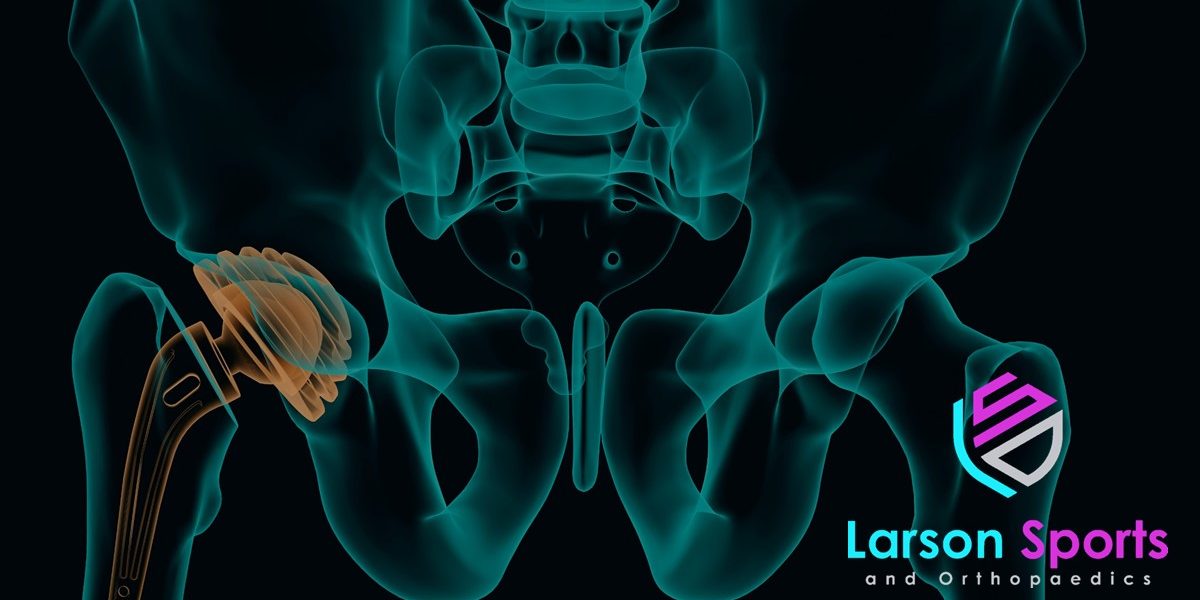Today’s athletic population is running into a problem: Can you continue to exercise after joint replacement surgery? There are a lot of people stuck between a rock and a hard place. Their arthritis hurts terribly when they work out, but they worry surgery may mean that they have to stop exercising completely!
So I thought it was time set the record straight. And I have to admit, as someone that no longer does hip or knee replacements (I only replace shoulders now), I was shocked by what I discovered. The advances in joint replacement over the last decade are truly astounding! And the experts in joint replacement have changed their attitudes to go along with these advanced implants.
Contents
- About the Authors
- Katina’s Story
- Potential Problems
- But Is It Safe?
- Squats After Hip Replacement
- Running After Knee Replacement
- Bench Press After Shoulder Replacement
- Getting Back To Competition Level
- How Exercise Helps After Replacement
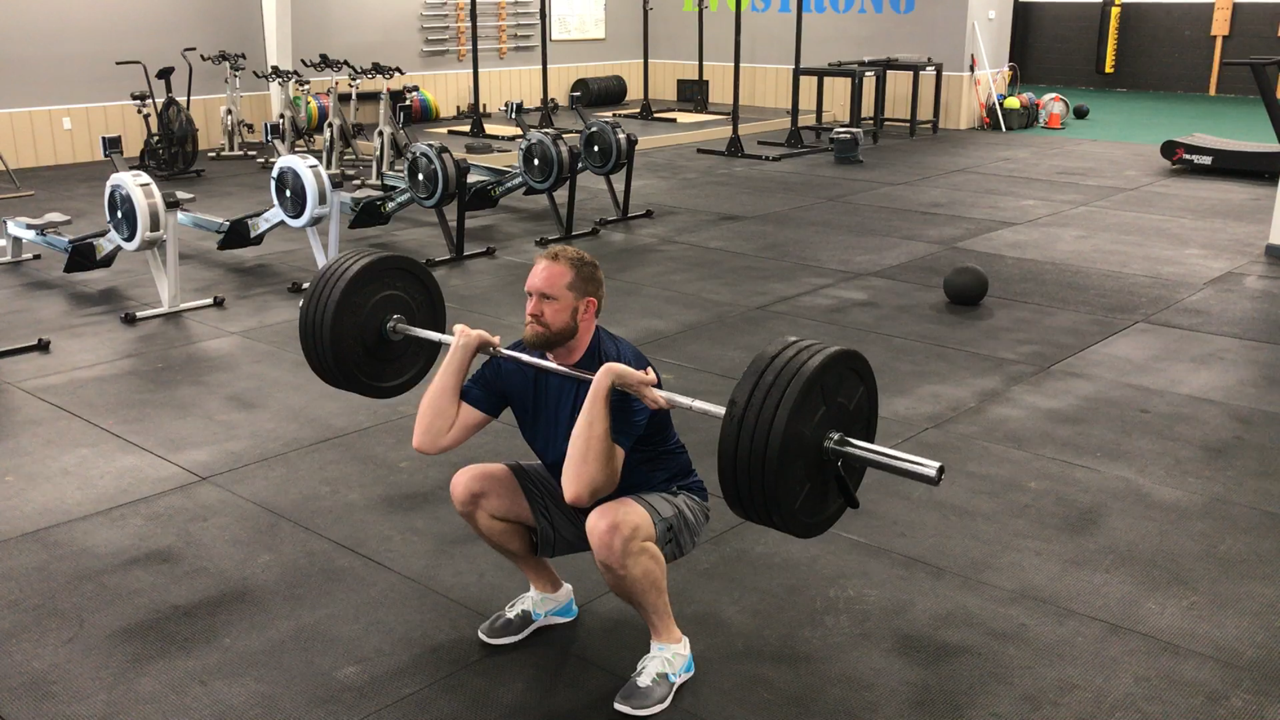
Dr. James Larson is an orthopedic surgeon specializing in sports medicine and arthroscopic surgery. He also holds a CF-L1 certificate and is a Certified BFR Specialist. He supports weight training and high-intensity exercise throughout the lifespan. He started LSO to keep more people moving better, longer.
Ask The Experts
To prepare for this article, I brought together a couple of my friends and colleagues. Dr. G Daxton Steele is an expert in Joint Replacements at the Andrews Clinic in Gulf Breeze, Florida. Dr. Ryan Geringer is a specialist in sports medicine and knee replacements at the Hughston Clinic in Columbus Georgia. As for me, you already know my dedication to keeping you all lifting safely. Although I perform mostly arthroscopic surgeries, I replace a lot of shoulders every year as well.
More importantly, we all practice what we preach! We all work out regularly. Dr. Geringer and Dr. Steele participate in local cross training Functional Fitness events. Dr. Geringer has been a member of the medical staff at the Atlantic Regionals and The Games in Madison. Both Dr. Geringer and I hold CF lvl 1 coaching certificates, too.
And to better understand to the science of the newest joint replacements, I consulted with a principal engineer at one of the largest manufacturers of joint replacements in the world. He was able to provide extensive information about just how far the science of implant materials has come, and frankly, it’s incredible.
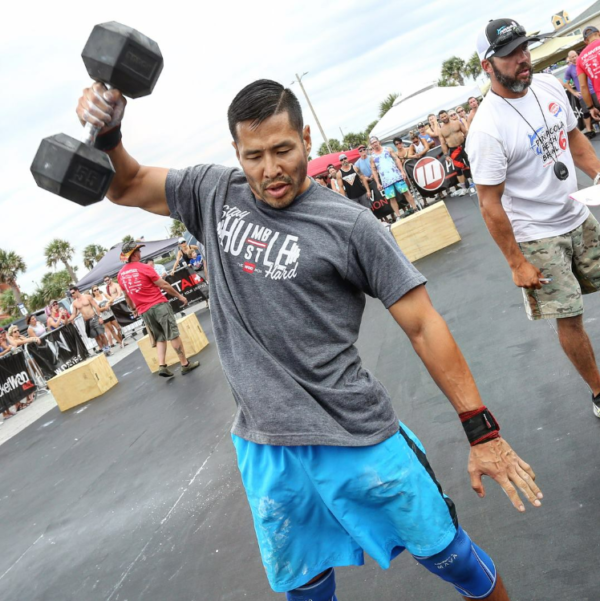
The Case of Katina
I wanted to start our discussion by discussing a specific patient, to let you see the realities of this situation. So I’m going to start with the story of Katina.
Katina is a young woman in her 30’s. She had hip dysplasia her whole life. Her hip joint didn’t form properly as a child, leading to an early onset of arthritis.
Before that, she had been a regular at her local box, working out more days than not. She could squat, run, row, do box jumps; she was fit, healthy, and active. But arthritis changed Katina from a healthy, active woman into somebody who could barely get through her day due to severe pain.
Working out wasn’t simply something she did; it was part of who she was! But now? She was going to need a hip replacement just to be functional enough to take care of herself and her family!
A Looming Decision
The prospect of a hip, knee, or shoulder replacement is frightening for many active people. They love to exercise, but can’t do it anymore because of the pain of arthritis. And yet they fear that a joint replacement means they won’t be able to lift weights anymore either. They worry their surgeon will tell them not to exercise after their joint replacement.
Katina was concerned about these same issues. Getting a hip replacement is worrisome for anybody. But even more so for a healthy and active person in their 30s. She didn’t know whether or not she would ever be able to work out again, but she knew she couldn’t live with the pain she was in.
But how worried did she need to be? Is true that you can’t work out after a joint replacement? Does a hip replacement mean you can’t squat anymore? Can you still run after a knee replacement?

What Problems Might Happen When Exercising After a Joint Replacement?
Many people like Katina fear that a joint replacement isn’t durable enough to do the kinds of workouts they love. And there are risks associated with working out after a hip or knee replacement. The biggest concerns about exercising after a joint replacement include loosening, wearing out, and instability. Any of these problems can result in the need for revision surgery.
Early Loosening
In the first few months after a joint replacement, you need to let your body heal. The bone actually has to grow into the metal parts to secure them. If you go back to heavy exercise too early, this can lead to a loose implant that is never entirely secure and could be persistently painful.
Some recent studies have shown that surprisingly simple exercises can produce enough torque to prevent adequate healing. I mean something as simple as standing on the operative leg while exercising the opposite side. This means you shouldn’t go back to your own workout until cleared by your medical team.
Wearing Out
Exercising after a joint replacement in the long term also has the potential to wear out the plastic liner that sits in the center of the joint replacement. As your joint replacement cycles through its range of motion, it wears off microscopic particles of that plastic at the joint surface.
The worn off bits of plastic then cause an immune reaction leading the bone around the implant to dissolve which that causes late loosening of the implant. Usually, we hoped for that process to take 20 – 30 years. But, the concern for people like Katina is that exercising might wear out the joint faster because of the extra motion.
Instability
One final concern: it is possible to dislocate a joint replacement while working out. A hip, knee, or shoulder replacement is easier to dislocate than your native joint. Trying to push past the boundaries of motion can cause the new parts to lever on each other and pop them out. Katina was worried that this risk of dislocation would prevent her from doing squats after surgery.
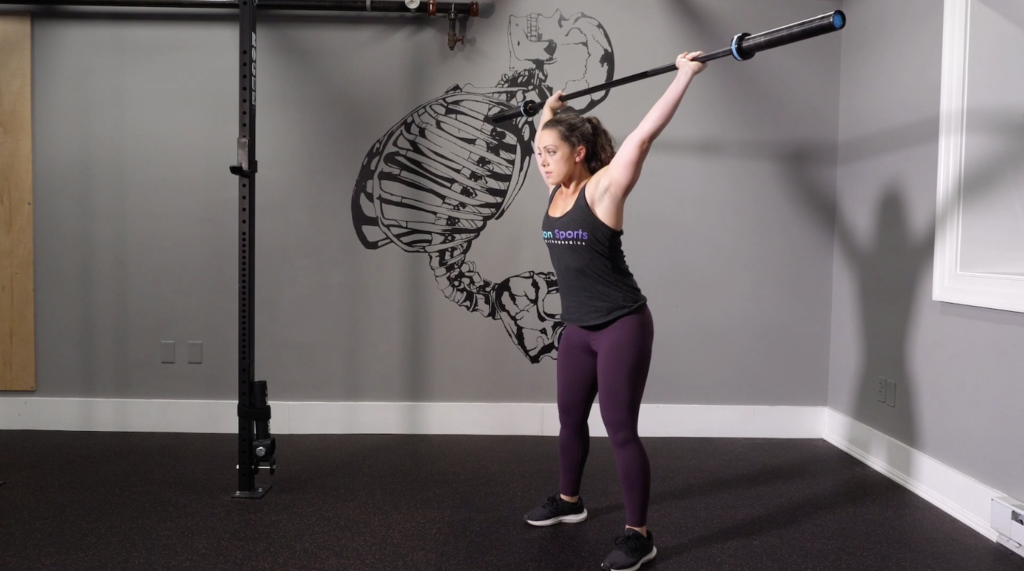
Are you having difficulty mastering movements like the Overhead Squat? It could be core weakness or maybe limited mobility in one of your joints. Our Functional Fitness Movement Assessment can help you isolate the problem and fix it!
A Brighter Future
Fortunately, many of Katina’s concerns have been mitigated by improvements in the implants used for joint replacements. The risks of instability and long-term wear, in particular, have been significantly reduced by the improved properties of the new materials.
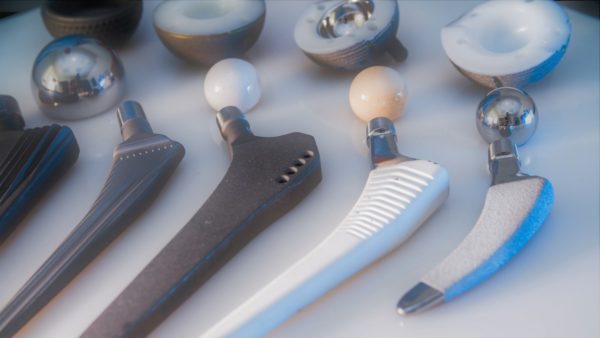
Is it Safe To Exercise After a Hip Replacement?
Dr. Steele is a specialist in joint replacement and replaces both hips and knees. And many of his patients are active and athletic, no matter what their age. What advice does he give his patients? And how about Katina? What did her doctor tell her?
Joints Are Replaced To Keep You Active
“First off, exercise is good for you at all ages. If you don’t exercise after your joint replacement, you’ll have a higher risk of heart disease and osteoporosis.” Says Dr. Steele. He expects his patients to be active, even playing sports and exercising.
But what about the risks? Dr. Steele says “If you lie in bed for the rest of your life, your implant will not wear away. On the other hand, if you run a marathon every weekend, it will wear out fairly quickly. All other activities in between are somewhat unknown with regards to wear rates.”
Better Implants Let You Do More Exercise
Fortunately, the newest plastic components are light years ahead of the previous generations. In fact, many of today’s polyethylene components show just a tiny fraction of the wearing that older materials did. And they can often last close to 100 million cycles in laboratory testing!
Can you even imagine an EMOM of 100 million movements!? Death by burpees, indeed! By my calculations that roughly 20 burpees per minute for… 9 and a half years!
Additionally, when the plastic is stronger, we can use less of it. With a thinner plastic liner in the socket, you can use a larger metal ball on the other side of the joint. One significant benefit of a larger diameter femoral head is improved stability. You can take that hip through a far more extensive range of motion!
High Impact Exercise is Risky For Joint Replacements
Much of our previous understanding of exercising after hip and knee replacements is based on studies from the late 90s. They show that “high impact” sports and activities can wear out a joint faster. Racquetball, running, high-impact aerobics, most ball sports, martial arts fall into this “high impact” category.
But even with the improvements to wearing and stability from the new plastics, we still worry about fracture. The components can only take a certain amount of direct force before they break, so we are still concerned about high impact sports.
Fortunately for our discussion, weight lifting does not fall into the “high impact” category of exercise. Which is excellent because all current evidence shows that people get great benefits from weightlifting, even into their 90s!
Doing Squats After Hip Replacement
“Heavy squatting is fairly safe. While the weight may be high, the time spent under load and the total repetitions or cycles are low,” says Dr. Steele. But you have to be careful with how deep you squat, it’s possible to dislocate your hip by squatting too deep.
With the newer implant technology though, instability is less of a concern. In fact, some people are actually able to get back to squatting below parallel.
Back to Katina for a minute: She wanted to get back to her usual strong and healthy self. So she checked with her surgeon, who encouraged her to keep working out, and gave her the green light for squats.
She slowly worked her way from 24” box squats down to squatting to a medicine ball, and eventually full depth without support. She let pain be her guide and progressed slowly throughout many months. Now she is back to doing the workouts she loves with only a few modifications!

Exercising After A Knee Replacement
Knee replacements are even more common than hip replacements. Dr. Geringer replaces knees regularly in active patients. Unfortunately, athletes who’ve had injuries like ACL or meniscus tears are often more likely to get arthritis. In those patients, arthritis can set in early; when they are young and want to stay active.
But Dr. Geringer says that it’s okay to keep working out after a knee replacement. He would rather have people working out and staying healthy. “People today don’t get nearly enough exercise. I’d hate to be a part of that problem! I tell my patients to try and wear their knee out!” he says.
Running After a Knee Replacement
“I do caution my patients about running though. We know that studies have shown long distance running too rough on a knee replacement. But I have no problem with people working back to WODs with short 200 or 400 meter runs, as tolerated.”
Dr. Geringer usually tells people to let pain be their guide. “If it feels comfortable, go ahead and do it. If patients have pain while running, I usually encourage rowing or biking as an alternative.” Walking and hiking are also perfectly fine.
And who knows? Maybe the advances in plastics will one day prove to allow knee replacement patients to get back to running long distance as well!
Doing Squats After A Knee Replacement
One thing to keep in mind with knee replacements: the shape of the implants isn’t precisely the same as the original joint. Because of that, they may not allow a full and normal range of motion. The shape of the implants may block you from full flexion, preventing you from squatting as deeply.

Do You Have Adequate Mobility To Avoid Injury?
Take our Functional Movement Assessment Course to evaluate your motion and stability and see where your biggest restrictions are.
Exercising after a Shoulder Replacement
Fortunately, most lower body exercises won’t be affected by a shoulder replacement. You won’t hurt the replacement at all by balancing a barbell for squats. Which is fantastic, because lower body exercise generally gives you the best benefits.
Similarly, there is very little force on the joint replacement when you are hanging. So if your range of motion recovers, you can still do pull-ups after a shoulder replacement. But you do need to be sure that you do the pullups in a slow and controlled fashion. Sharp jerking movements, like kipping or butterfly pull-ups, can still damage your rotator cuff which would be devastating to a shoulder replacement.
Similarly, push-ups after a shoulder replacement pose no major problem. Just keep your hands closer to the body, with more narrow spacing, to protect your rotator cuff.
Looking to schedule an appointment with Dr. Larson? You can contact his office HERE for an evaluation. His office is easily accessible from Maryland, Virginia, West Virginia, and D.C.
Bench Pressing After Shoulder Replacement
In fact, there are very few situations where a shoulder replacement would limit your ability to exercise. One of those is heavy bench press. Powerlifters are prone to shoulder arthritis, and these people are used to bench pressing 300 lbs or more.
But a shoulder replacement can’t take as much weight as a hip or knee replacement. Most of them can only withstand about 300 lbs of shear forces before structural failure occurs. That means you could crack it right in half! So keep the weight light on bench press.
Can I Compete In Sports After a Hip or Knee Replacement?
Competitive events are a different situation. They may pose a higher risk for injury unless you are allowed to make specific accommodations. As Dr. Steels says, in a competition “I feel you tend to ignore some important pain cues which may be critical after arthroplasty.”
In general, it’s probably best to focus on lifting and exercise for health than competitive success after a hip or knee replacement. As the old saying goes “Weightlifting is great for your health unless you try to do it competitively.”
That’s not to say it’s impossible to compete after again after a hip or knee replacement. For a specific example, Dr. Geringer recommends people follow his friend Cameron Bucek (here’s Cameron’s Instagram if you want to check out this amazing athlete! And the LSO Insta too, follow us too!)
Cameron fractured his hip, which lead to the death of the bone, and eventually he had to have it replaced. When healthy, he had placed #239 in the world on The Games leaderboard.
After his injury, he was determined to compete at that same level. And his dedication shows. Since his hip replacement, he has worked back to being ranked 439th World Wide for men age 45-49 on The Games leaderboard. That’s the top 2% of athletes, and all with an artificial hip.
Of course, he has had to make some accommodations: He only runs on the AirRunner. He does all movements on a dense foam mat to decrease the impact. And he has to shift his foot out to get full squat depth. He says his biggest problem is with mobility, so he does ROM WOD everyday.
Whatever he’s doing, its working! I’m not sure the hip is the only cybernetic implant Cameron has; he’s an absolute machine!
The Benefits of Exercising After a Joint Replacement
Ultimately we all recommend continued exercise after a joint replacement. Studies focused on moderate sports and weightlifting indicate that it is probably safe to do. Additionally, the newest technology has dramatically reduced the concerns we once had about exercising after a hip or knee replacement. And the benefits to your overall health from exercise are just too good to pass up.
We recommend waiting 3-6 months before returning to the gym. That’s the minimum time to let your body grow into the implants. But it can take TWO YEARS for your body to finish healing. So be patient, don’t rush it, and you will be rewarded with a sturdy, pain-free, and durable joint.
Keep the weight moderate, don’t try to go back to powerlifting. Remember to scale and accommodate as needed. Use padding to cushion yourself and stay in control while exercising. Avoid forcing the range of motion, or you could end up with a dislocation.
Ultimately we can’t tell you how to live your life but just be reasonable when choosing your sporting activities. And remember moderation is the key!
This does not constitute specific medical advice and does not indicate a physician-patient relationship between Dr. Larson and readers of this website. Please consult your own physician regarding any of these recommendations before starting them.
Works Cited
- Abe, Hirohito, et al. “Jogging After Total Hip Arthroplasty.”
- Bergmann, Georg, et al. “Physical Activities That Cause High Friction Moments at the Cup in Hip Implants.”
- Bergmann, Georg, et al. “Standardized Loads Acting in Hip Implants.”
- Lee, Thay Q. “Biomechanics of Hyperflexion and Kneeling before and after Total Knee Arthroplasty.”
- Nagura, Takeo, et al. “Mechanical Loads at the Knee Joint during Deep Flexion.”
- Ollivier, Matthieu, et al. “Does Impact Sport Activity Influence Total Hip Arthroplasty Durability?”
- Peters, Patrick. “Mountain Sports and Total Hip Arthroplasty: A Case Report and Review of Mountaineering With Total Hip Arthroplasty.”
- Vogel, Laura A., et al. “Physical Activity After Total Joint Arthroplasty.”

